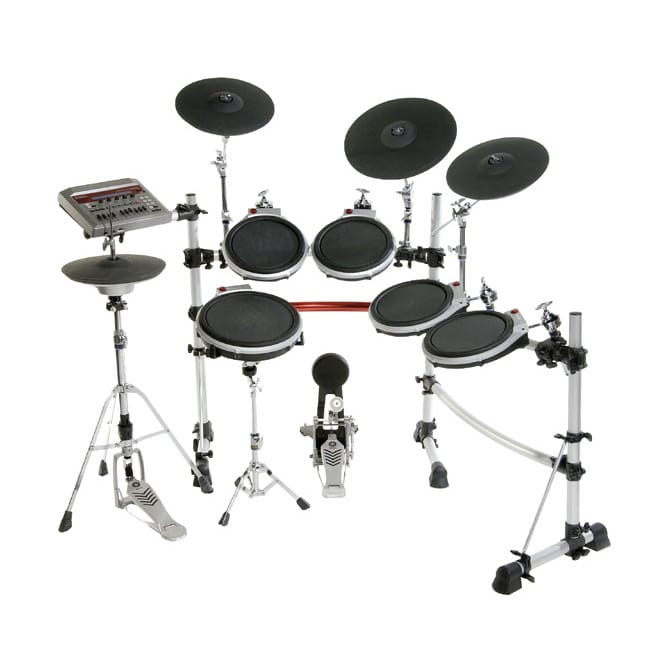Buying an electric drum kit
Buying an Electronic Drum Kit? 5 Smart Tips to Avoid Disappointment
Thinking about buying an electronic drum kit? Great idea — but before you hit that “buy now” button, it’s important to understand what you’re getting into. Not all e-drum kits are created equal, and the buying process can be a little tricky if you don’t know what to look for.
Here are five valuable tips to help you avoid common mistakes and make a choice you won’t regret — whether you buy online or in a physical store.
1. Test Before You Buy (If Possible)
It might seem convenient to order an electronic drum kit online and save a few bucks, but beware: once you’ve unboxed, assembled, and played it, returning it can be a hassle — and often comes with a restocking fee or partial refund. That’s a frustrating experience no one wants.
Each e-drum kit feels and sounds different, even within the same price range. Pads vary in sensitivity and response, modules differ in sounds and features, and setups look quite different in real life than in product photos — especially once all cables are connected.
If possible, visit a physical music store, try out a few kits, and see how they feel. Even if you end up buying online later, playing a kit in person first can prevent a costly mistake.
2. Consider a Second-Hand Drum Kit
Buying second-hand can be a smart way to get more drum for your money. Technology in electronic drums has been highly developed for many years now, and even a 5- or 10-year-old kit might still perform exceptionally well today.
For example, a kit that originally retailed for €2500 might now sell for around €1000 — giving you access to professional-level gear for a fraction of the original price. (Note: prices vary depending on brand, demand, and condition.)
However, always test used e-drum kits thoroughly before buying. Pads and triggers wear out, cables can become faulty, and modules may have issues. Also, listen to how much acoustic noise the pads make — some older kits are surprisingly loud, which defeats the purpose of buying an electronic kit for silent practice. You don’t want to upset your neighbors with pad noise when you were hoping to practice quietly.
3. Avoid Extremely Cheap Electronic Drums
You’ll find some e-drum kits online for unbelievably low prices — but be careful. Many of these ultra-budget kits are little more than toys. They break easily, don’t respond well to your playing, and sound poor right out of the box.
A flimsy kit with low-quality pads and a glitchy module is not only frustrating, it can be actively demotivating — especially for beginners who are trying to get into drumming seriously. A bad experience with a poor-quality kit might make you give up entirely.
If you’re serious about learning drums, make sure you invest in a kit that offers at least basic quality and reliability. Want to know what you should budget for a decent entry-level e-drum kit? Check out our detailed guide on what electronic drum kits really cost.
4. Still Want to Buy Online? Know What You’re Getting
If you’ve already tried a specific model in a store or at a friend’s place, and you’re confident it fits your needs, buying online can be a great way to save money. Many online retailers in the Netherlands, Belgium, Germany, and the UK offer competitive prices and quick shipping.
We recommend comparing offers across several websites before making your final decision. On our site, you’ll find a price comparison tool for popular electronic drum kits.
5. Don’t Forget About the Sound System
One of the most overlooked parts of buying an e-drum kit is how you’ll actually hear it. You’ll need to connect your drum module to either:
- A drum monitor (for playing out loud)
- Or a pair of headphones (for quiet practice)
If you’re planning to practice at home, a good-quality pair of headphones is essential. Cheap headphones can make even a great drum kit sound weak or distorted, while a good pair will let you hear all the detail, dynamics, and depth in your playing. If you prefer to play through speakers, be sure to use a drum-specific monitor, not a guitar amp — see our guide on choosing the right drum monitor for more info.
Final Thoughts
Buying your first (or next) electronic drum kit should be an exciting step, not a stressful one. Do your homework, try before you buy if you can, and don’t skimp on the things that really matter — like playability, durability, and sound quality. Whether you’re a beginner or a seasoned drummer, the right e-drum kit can offer years of fun, progress, and creativity.
Have fun and happy drumming!

